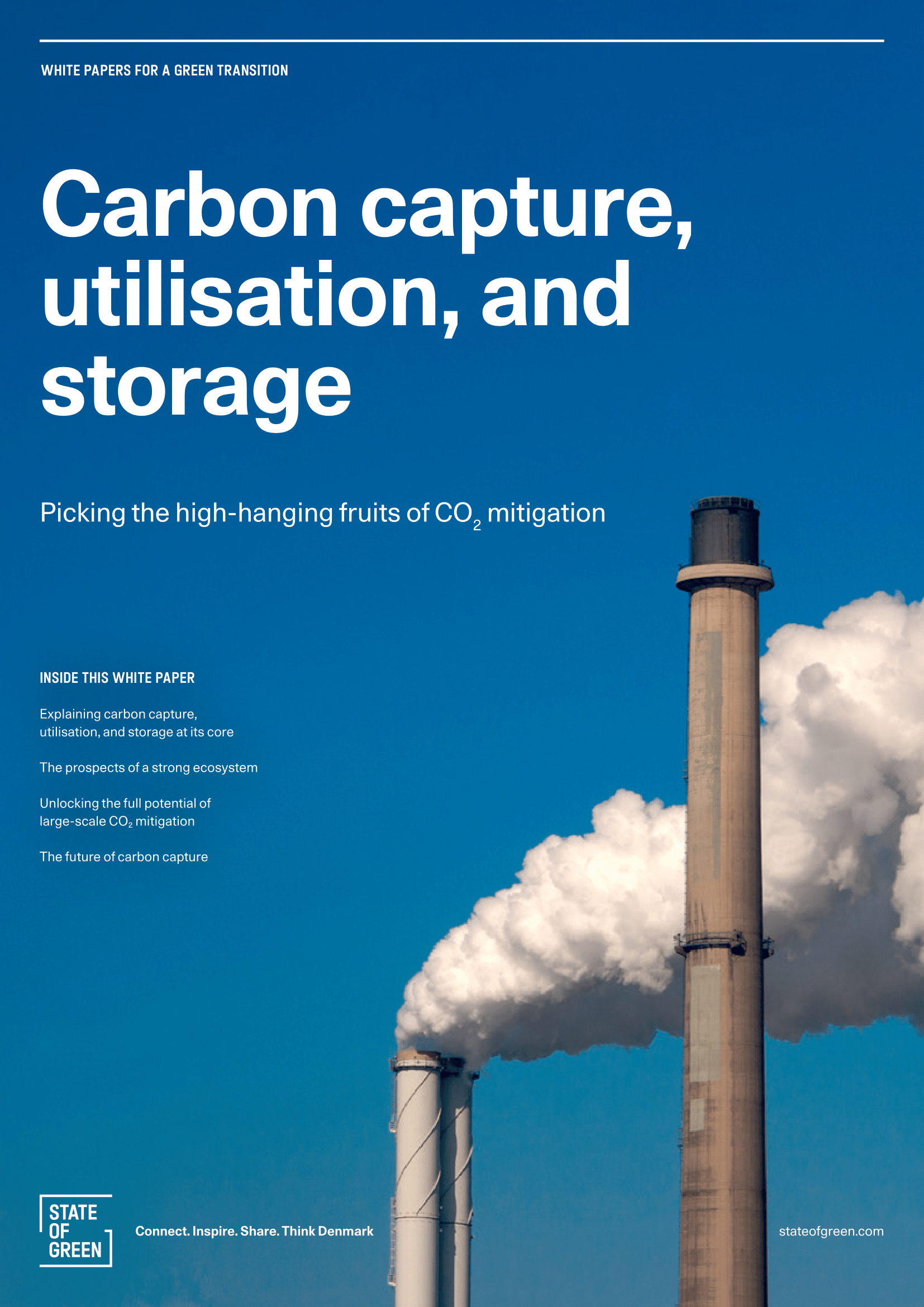White Paper: Carbon capture, utilisation, and storage
This article is part of the publication “Carbon capture, utilisation, and storage.
Download the publicationPerspective
Carbon capture, storage and utilisation



This article is part of the publication “Carbon capture, utilisation, and storage.
Download the publicationSince the 1970s, Denmark has had a tradition of enacting agreements with broad consensus across the political spectrum on energy and environmental policy issues.
Effective public-private partnerships have allowed changing Danish governments to enact regulations and programs with the support of business and industry, ensuring successful implementation and adherence. While the public sector provides the ambitious long-term goals and stable framework conditions, the private and academic sector supplies the innovation, solutions, and investments needed to achieve the visions. Among other significant achievements, it was this public-private synergy that paved the way for a global wind industry that has put Denmark on the green world map.

In this publication, you can learn how to achieve one of the world’s most ambitious climate goals with recommendations from Denmark’s 14 climate partnerships.
Read the publicationThrough 50 years of working across professional boundaries, Denmark has learnt that effective sector integration requires a pragmatic approach and an experimental mindset. But even more crucial, it comes back to stability and trust.
Commercialisation of CCUS requires developing a new infrastructure, where an inter-sectorial, long-term model for cooperation between public and private stakeholders is pivotal. Both financial perspectives and business model perspectives depend on regulatory frameworks which are determined by the government. Efforts to reduce risk and uncertainty have a positive effect on the willingness to invest, the access to capital and steer the focus towards R&D and infrastructure in the industry.
When it comes to research and development in green technologies, the rewards of a whole-of-society approach also stands out. Today, Denmark boasts several companies that hold global leading positions in the energy and environment industries, and no other OECD country displays a similar development of green technology measured in patent applications.
Being neither a silver bullet nor a standalone, the Danish story is simply a testimony that trust, continuity, and binding commitments are paying dividends. As such, it speaks loud and clear to the power and potential of placing public-private partnerships and global cooperation at the centre of the green transition.